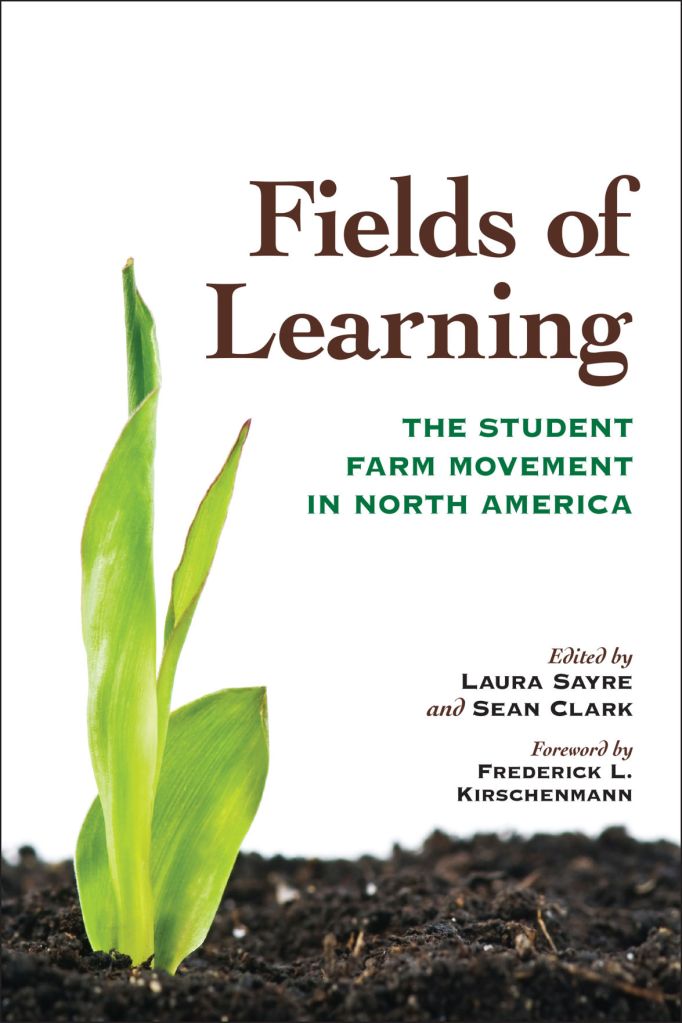Book review: ‘Fields of Learning’
Published 12:00 am Sunday, July 10, 2022

- BOOK REVIEW
“Fields of Learning: The Student Farm Movement in North America (Culture of the Land)” by Laura Sayre and Sean Clark, editors. Foreword by Frederick L. Kischenmann. Lexington: University Press of Kentucky, 2022. 376 pages, $39.95 (hardcover), $30 (paperback).
“Fields of Learning” examines the past, present and future of university-run student farms in North America in the context of contemporary food production’s existential questions. How can we grow the food we need sustainably without ruining our environment and our health? Can new models of localized agriculture counteract the negative effects of globalization and industrialization, and the ongoing disappearance of the North American farmer? Can universities lead the necessary transformation?
“Fields of Learning” asserts that recent generations of university educators and students have reconceptualized their relationship with food, reject agriculture’s prevailing, damaging mass production model and are leading a burgeoning student farm movement on North America’s college campuses that has the potential to revolutionize agriculture and remedy the current system’s excesses. The editors and contributors present case studies of student farms at 15 campuses. Each case study is written by the faculty or staff leaders of a campus farm and includes reflective essays by students who have worked on the farm. Together, the pieces are meant to highlight successes, failures, best practices and a future agenda for today’s student farm movement in the field, classroom and community.
The editors explain that the student farm movement has roots that reach back to the 19th century environmental movement and the establishment of land-grant universities charged with teaching modern agricultural techniques. The editors assert that, paradoxically, the expansion of agriculture education facilitated the rise of industrial farming and its excesses, the gradual demise of the farming class and the rise of today’s unsustainable mass agriculture economy. The student farm movement evolved in parallel with these trends. Its current goal is to train university-educated farmers in sustainable cultivation techniques and world views. The hope is that these new-millennium farmers will lead the transformation of North American agriculture.
Readers of the Daily News will be especially interested in the first case study, which features the Berea College Farm, founded in 1871. Berea’s story illustrates the promise and pitfalls of student farms in the era of mass agriculture. The farm generally fulfilled its mission to provide wholesome work-study opportunities and food for the racially-integrated student body. Yet no agriculture curriculum existed before the 1920s, farm labor and management has been haphazard – students leave Berea for summer break, when the farm needs their muscle the most – and the college’s leadership pressed until recently for the farm to pay for itself by industrializing operations.
Case studies in the middle sections of the book showcase the emergence of the contemporary student farm movement in the late 20th century and the creation of programs in sustainable agriculture. In the 1990s, for example, the University of California, Davis, Student Experimental Farm served as the incubator for an innovative, interdisciplinary sustainable agriculture curriculum that students, faculty, and staff developed together. The program integrated technical training, interdisciplinary coursework across the social and natural sciences to develop communication, critical thinking and problem-solving skills, and real-world skill-building via internships and experiential learning.
The last group of case studies showcases current and future trends, including the institutionalization of organic cultivation and the student farming movement’s ongoing attempts to serve the broader community and engage the public in solving the dilemmas it is addressing. The student reflections in this final section are compelling. A University of British Columbia student explains how the student farm there epitomizes the “interconnected web of complex human and ecological bonds” and that threats to close the UBC farm emboldened her to become an activist. A New Mexico State University graduate writes that her studies inspired her to become an organic farmer and establish a Community-Supported Agriculture program to serve Las Cruces. The editors conclude the book with a brief primer on how to establish a student farm.
“Fields of Learning” will interest readers in our farming community and those who wish to learn more about sustainable, organic agriculture and the history of agriculture education. The book presents a wide array of student farm models and experiences; educators and students at Western Kentucky University and at regional high schools with agriculture training programs will likely come across good ideas for enhancing their curricula and experiential learning programs, regardless of whether their school has a student farm. “Fields of Learning” proposes lofty, worthy goals that may not be achieved as soon as its authors hope, but it is nevertheless inspiring, thought-provoking reading.
– Reviewed by Eric Reed, WKU History Department.






